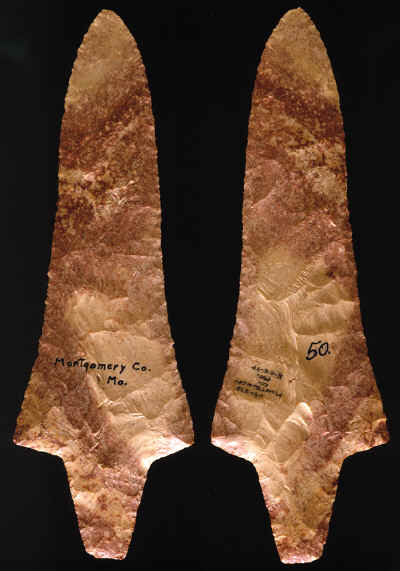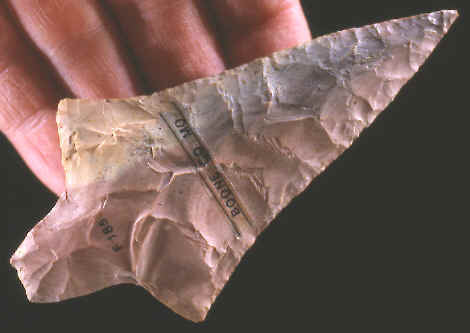|
||||||||||||
|
Dickson, Snyders and Ross points were the thinnest most skillfully flaked points made during the Woodland period in Illinois and surrounding states. Skilled flintknapping reached a "golden age" during the Middle Woodland period then began to fade. Dickson points were mainly used as knives and resharpened when the blade edges became dull or broken. Dickson points were resharpened two different ways. One was by pressure flaking both sides bifacially. The other was by pressure flaking one side only, leaving a beveled edge. Beveled edge resharpening was used extensively during the Archaic period but the technique was not commonly used during the Woodland period. Most Dickson points were made of chert from the Burlington geological formation and was heat treated. Flintknappers call much of this chert "creek Burlington". This chert can be found in creeks along the Mississippi and Illinois Rivers. When it's heated it turns the same color as several of the pink and red Dickson points pictured on these pages. |
||||||||||||
| CONTINUE ON TO PAGE THREE | ||||||||||||
|
"REFERENCES"
|
||||||||||||






